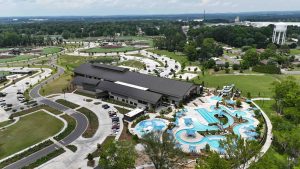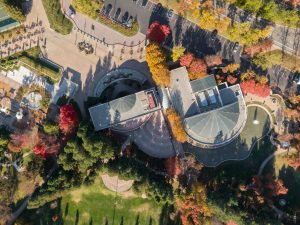When the official ribbon is spread out across the entrance of that new sports tourism complex or fantastic recreation center, it will be touched by a number of hands. Those hands will likely represent the members of the group of stakeholders that are responsible for bringing the facility to life. It’s a proud day for all involved and symbolic of the manner for which sports and recreation projects are developed in 2021. That’s because many of these facilities are launched thanks to the public-private partnership structure.
Let's create something today
Defining P3 Agreements for Sports Tourism and Recreation Complexes
In public-private partnerships (P3), public and private sector entities combine their resources to create a structure, whether recreation center, stadium, or even a school that will serve the surrounding community. P3’s are important and effective because they combine the core competencies of a local business community with the resources of city government. In most cases, sports and recreation facilities benefit both the public and private sectors. P3 agreements leverage these shared benefits to drive joint participation and investment in the development process. This ultimately makes the process more efficient and potentially leads to a more impactful facility.
What the Public and Private Sectors Offer in a P3 Agreement
P3 agreements can vary as much as the development projects they drive. However, here’s a rundown of a few items that may be offered:
In a P3 Agreement, the Public Sector May Offer
Land
Local governments often have access to undeveloped or underutilized land that can be used for facility projects.
Tax Incentives
Through tax incentives, the public sector can entice companies to lend resources, capital, and thought leadership to development projects that have a health or economic benefit.
In a P3 Agreement, the Private Sector May Offer
Financing Resources
Private sector companies often take on the financial risk of sports or recreation development projects in exchange for receiving income from facility usage
Management of the New Asset
Companies that specialize in facility management have the physical resources to maintain a sports or recreation asset and foster its growth. Managing the asset may be a condition of the P3 agreement.
The Key to Developing Public-Private Partnership Agreements
A critical component in developing P3 agreements is being able to communicate the specific benefits of the partnership to the other side. For example, government officials must be able to communicate benefits such as the development of new hotels and increases tourism spending to potential business partners. Private sector organizations can communicate benefits such as supporting the health and vitality of community, promoting public safety, or generating tax revenues.
The Sports Facilities Companies are the leaders in planning, developing and managing sports, recreation, event, and entertainment venues. We are adept at developing impactful partnerships. Are you ready to push your project forward? Contact us today at 727-474-3845.






